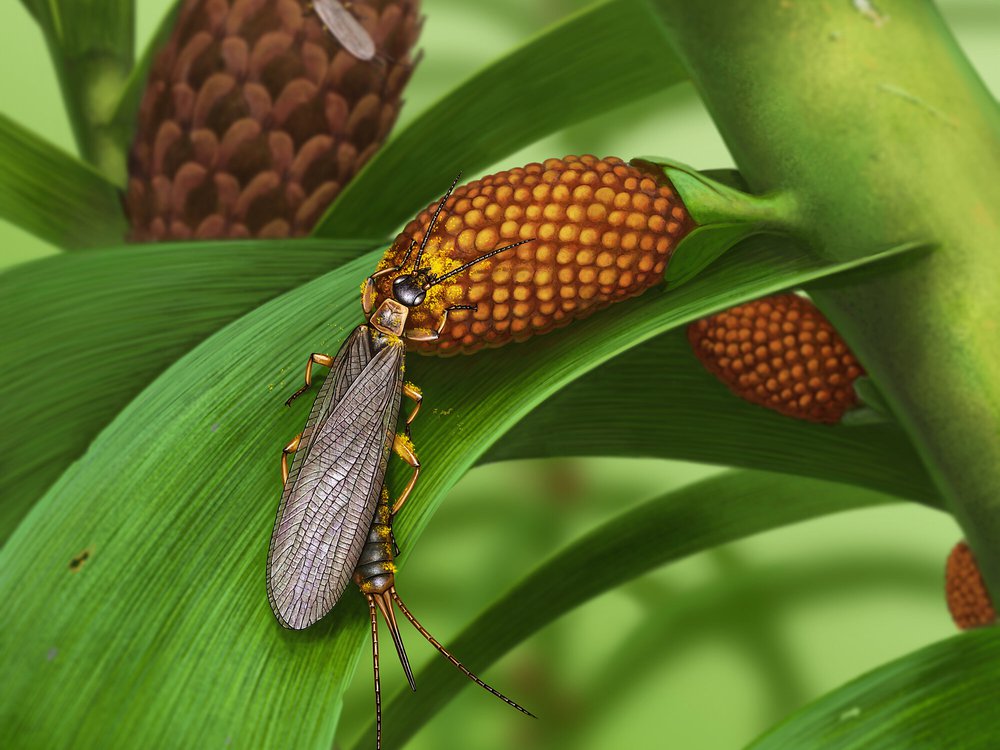Scientists Discover Oldest Known Fossils of Pollen-Carrying Insects
It’s unclear whether the creatures were pollinating prehistoric plants or just getting a snack

Scientists have discovered 280-million-year-old fossils of insects preserved with pollen on their bodies. These record-setting remains are around 120 million years older than the previously oldest known fossils of pollen-carrying insects, the researchers reported last week in Biology Letters.
The team examined 425 fossils of an insect called Tillyardembia and realized that six were preserved with pollen on their heads, bodies or legs. These earwig-like creatures from a pollen-eating genus would have been about 1.5 centimeters long and climbed trees to consume pollen due to their flimsy wings, Alexander Khramov, a co-author of the paper and a paleoentomologist at the Borissiak Paleontological Institute in Russia, tells Science News’ Sid Perkins.
Paleontologists uncovered the remains trapped in sediment on the bank of the Sylva River near the village of Chekarda in Russia, reports the Guardian’s Ian Sample. The fossils date to the Permian period, which lasted from 251 to 299 million years ago and ended with a mass extinction.
For tens of millions of years, insects have played the role of courier, transporting pollen on their bodies while they travel from plant to plant and snack on nectar and pollen. In the process, they transfer pollen from a flower’s anthers to another’s stigma, which starts the fertilization process. Today, around three-quarters of flowering plants need an animal pollinator to reproduce, and the vast majority of pollinators are insects.
But this recently discovered preserved pollen came from non-flowering gymnosperms, a group of seed-producing plants that includes conifers such as pine, fir and spruce trees. The find adds to evidence that insects may have pollinated plants like conifers before the first flowers evolved between 140 and 250 million years ago.
From the fossils alone, the researchers couldn’t prove whether these insects were pollinators or just mooching for food. “We cannot go back in a time machine to observe whether these insects did pollination work or not. Even if they pollinated ancient gymnosperms all day round, there are no ways to prove it with certainty by means of paleontology,” Khramov says, per the Guardian.
But the researchers did find that the pollen came from a narrow range of plants. “That sort of specialization is in line with potential pollinators,” Michael Engel, a paleoentomologist at the University of Kansas who did not contribute to the study, tells Science News. “There’s probably vast amounts of such specialization that occurred even before Tillyardembia, we just don’t have evidence of it yet.”
Barry Lomax, a plant paleobiologist at the University of Nottingham in England who was not involved in the study, said this specialization “suggests the possibility that insect pollination predates flowers,” per the Guardian.

